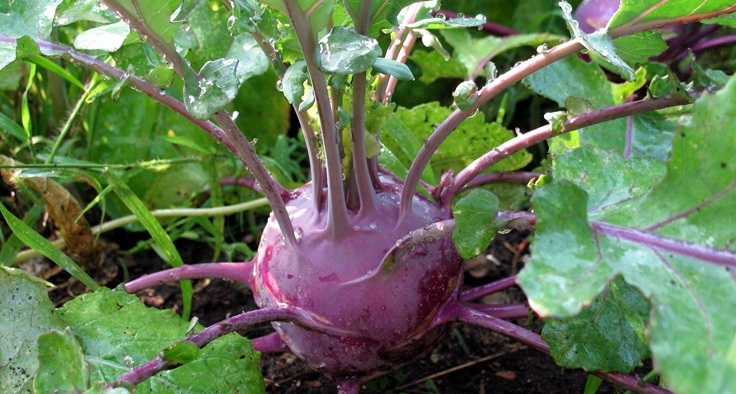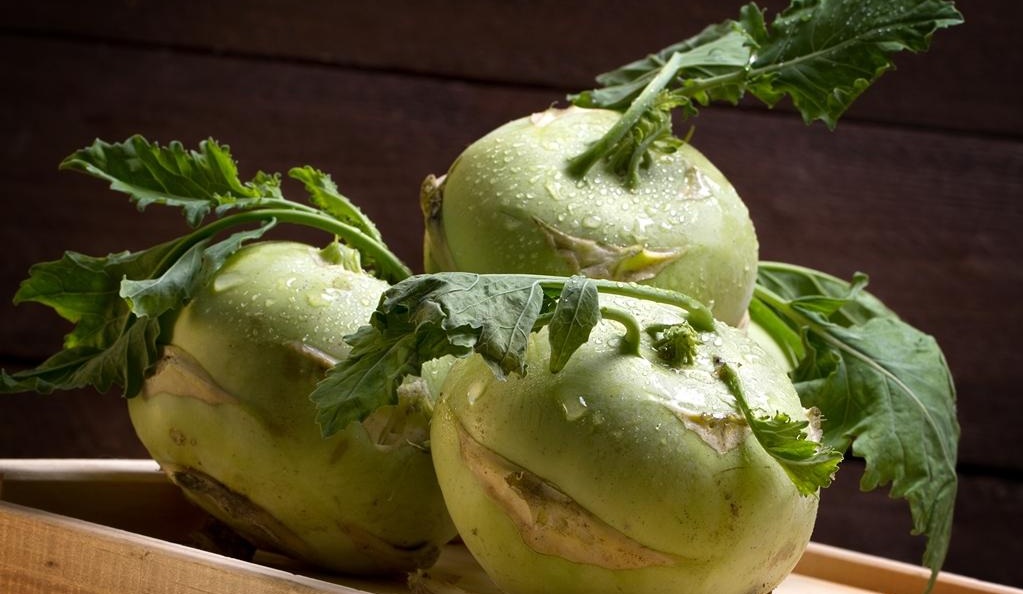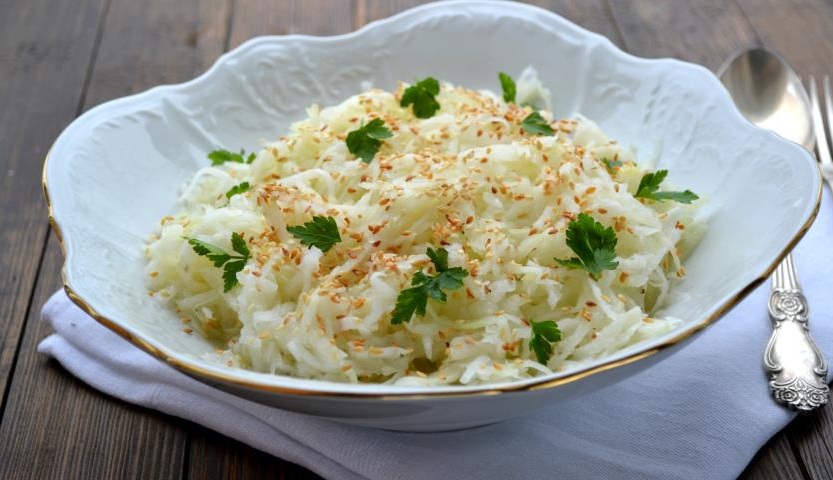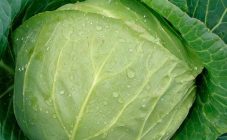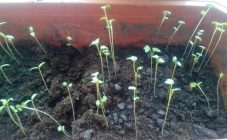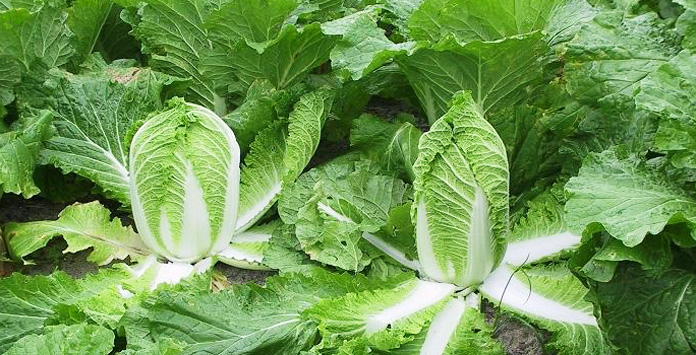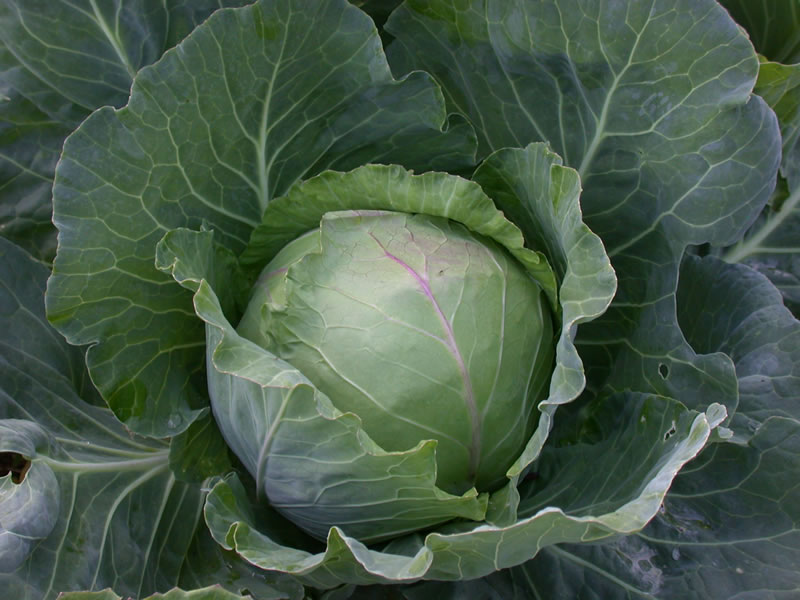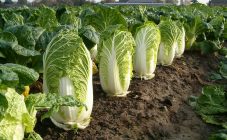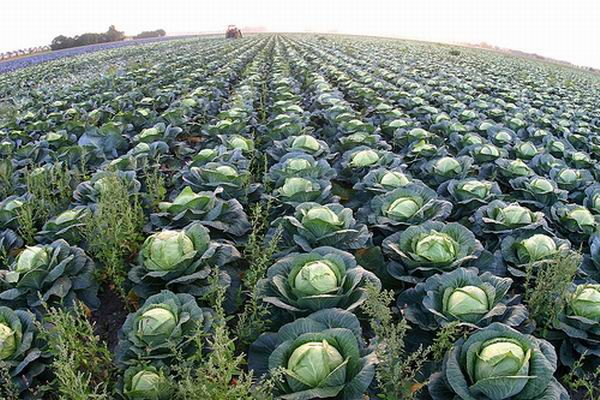Content:
Kohlrabi is a vegetable crop that belongs to the Cabbage genus, Cabbage family and is a type of white cabbage. In just a century and a half, this vegetable managed to gain popularity among residents of all of Europe. What does culture look like and how does it need care?
Basic information about culture
Kohlrabi is a type of white cabbage with a two-year development cycle. In the first year, the culture forms a stem crop, and in the second - a stem emerging from the upper bud, the height of which sometimes reaches 1 m.In contrast to the turnip, in which leaves are formed only in the upper part, kohlrabi has growth points in the lower part. The total number does not exceed 30 pieces.
The stemfruit is rounded, slightly flattened above and below. The skin covering the vegetable is colored in shades of raspberry, purple and green. Kohlrabi's core is always white. The taste of "cabbage turnip" is pleasant and delicate, somewhat reminiscent of a common cabbage stump. Depending on the characteristics of a particular variety, the stem plant weighs 200-800 g.
After the end of shoot formation, a flower brush appears at the top. Instead of flowering, fruits appear - pods, inside which brown seeds are contained. Under suitable conditions, the seed retains a high germination capacity 5 years after harvesting.
Among gardeners, the following kohlrabi varieties are popular:
- Moravia is an early ripening variety with a growing season that lasts only 60-70 days. The stem fruit is light green, pleasant to the taste. Fruit weight - 0.8-1 kg. The species is resistant to low temperatures;
- Atena is an early ripening culture that, with proper care, forms stems weighing 3.5 kg;
- Vienna violet is a mid-season species. Stalk weight - 1 kg;
- Giant is a late variety with excellent resistance to low and high temperatures. A concave stem plant often weighs about 6 kg;
- The Blue Planet is a variety resulting from the crossing of several species. The hybrid forms 250 g. Fruits with excellent taste.
Gardeners who have recently acquired a plot often ask what kohlrabi is. The first information about the plant kaulorapa, and now kohlrabi, belongs to the inhabitants of the Roman Empire. At that time, only slaves and the poor ate the vegetable.
Chemical composition
What is kohlrabi cabbage, scientifically? The stem plant contains a huge amount of vitamins, minerals and salts. The core of the vegetable is rich in vitamins PP, A, B, B2, B5, E, K, but the largest amount in kohlrabi is vitamin C. According to research by scientists, there is more of this substance in cabbage than even in citrus fruits. The stem crop is rich in calcium, phosphorus and magnesium salts. Among other chemical elements, the composition contains magnesium, iodine, sulfur, cobalt, copper, sodium, selenium.
What are the varieties
Kohlrabi cabbage is divided into two types. The first includes white varieties, the second - purple. Features of the species:
- The growing season of white varieties is short, so this vegetable is used for making salads in summer. The species is picky about watering;
- Purple varieties take much longer to ripen, but they also last longer.This type of fruit is ideal for long-term storage. They do not require special humidity, so they perfectly tolerate long droughts and sudden temperature jumps.
Cabbage can look different, however, the care recommendations for the crop are the same for all varieties.
Medical use
Fresh kohlrabi is simply full of macro- and microelements, therefore, like any other healthy vegetable, kohlrabi cabbage is used to strengthen the body and treat a number of diseases. It is recommended to include cabbage in the daily diet for people who have:
- increased cholesterol;
- metabolic disorders;
- overweight;
- weak nervous system;
- hypertension;
- lack or poor absorption of calcium.
Kohlrabi does not have the ability to increase gas formation, like its relative white cabbage. Therefore, you can safely prepare main dishes, salads and even baby food from a vegetable.
Doctors put forward a contraindication to the use of kohlrabi cabbage for patients who have been diagnosed with an allergic reaction, increased acidity of gastric juice, and an acute form of pancreatitis.
Due to its pleasant taste and rich chemical composition, kohlrabi is added to many dishes. The stemfruit is stewed, boiled, baked, and the leaves are added to salads. The recipe for vegetable salads is very simple. All you need is to finely chop the vegetables to your liking. If desired, you can add boiled meat and sour cream.
Features of growing and care
Kohlrabi is grown in a seedling and non-seedling way. When to plant kohlrabi cabbage on seedlings? For seedlings, seeds are sown in a greenhouse in mid-March, and in open ground - in late April-early May. Young plants are planted in the garden in the second half of May and covered with foil. The shelter is removed as soon as the plants take root in a new place, about 2 weeks after planting.
The soil for this type of cabbage can be anything. The main thing is that the acidity of the medium is neutral. Kohlrabi loves to swim in the sun, so the landing site should be well lit.
Planting and caring for kohlrabi in the open field is carried out as follows:
- How to plant kohlrabi. Kohlrabi seedlings are planted according to the scheme 60 * 40 or 70 * 30 cm.The distance between plants of late varieties is made 5 cm more. In order for the plants to grow quickly, 2 glasses of ash are poured into the recesses, 2 tbsp. superphosphate, 1 tbsp. urea. How to plant kohlrabi correctly? The cabbage is buried along the cotyledons, covered with soil, trampled and watered. It is impossible to plant the plants deeper, because they will take a long and painful way to take root. To avoid the growth of weeds and too rapid evaporation of water, the garden bed where kohlrabi cabbage grows is mulched with sawdust or straw;
- Watering. Immediately after planting, when the plants form new roots and settle down in a new place, water is added 2-3 times a week. Adult plants are watered once a week. Provided that it is a very hot summer, the frequency of watering is increased. Cabbage will grow as large and tasty as possible if the soil in the garden is constantly slightly moist;
- Top dressing. Hummingbird cabbage is fertilized 3 times. The first time the seedlings are sprayed with a solution of complex mineral fertilizer after the formation of 2 true leaves. The next time the culture is pampered with nutrients 15 days before planting in a permanent place. The preparation of the working solution is as follows: add 1 tablespoon to a standard bucket of water. potassium sulfate and urea.The last time kohlrabi is fertilized directly during disembarkation. A mixture of superphosphate, urea and wood ash is introduced into the pits. Regardless of how the kohlrabi cabbage grows, it is impossible to apply more fertilizers than the recommended rate;
- Loosening and weeding. Despite the fact that the plant can grow in heavy soil, in order to get the most juicy and tender stems, it is recommended to weed and loosen the garden regularly. The chopper is deepened no more than 8 cm;
- Treatment for diseases and pests. Compliance with the rules of kohlrabi agricultural technology is the best prevention of most diseases and insects. Growing a vegetable begins with pre-sowing soil and planting material, then choose a place where Cruciferous plants did not grow last year. To save the next year's harvest, all organic residues left after harvest are collected and burned. Plantings infected with fungus or insects are sprayed with fungicides and insecticides.
Due to the unpretentiousness of the culture, everyone can grow kohlrabi on their site. So that the cabbage grows well and does not get sick, the plants are regularly watered and fed with organic or mineral fertilizers. Stem fruits and leaves are used to prepare various dishes that have an exquisite taste and replenish the body with necessary microelements.
